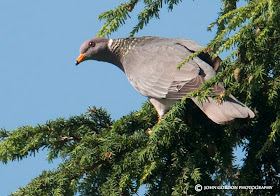July 24 2013 Iona Regional Park, Richmond B.C.
 |
| Iona South Jetty is 4km long |
With temperatures hovering around 22 c and with sunburn a good possibility, the thought of walking 2.5 kms on the South Iona jetty to look for a bird that might have already departed for California had me wondering if I was still sane!
 |
| Looking toward UBC as the tide moves in. Scenics taken with Canon SX50 |
I made a last minute decision to bike it, I hadn't biked or done much exercise in years so it wasn't long before my legs could pedal no more. I stopped and started several time before arriving at Marker 164, the last place the bird had been seen. I couldn't find the Tattler but a Spotted Sandpiper was feeding way out on the sandbar.
 |
| Spotted Sandpiper (Actitis macularia) |
As I had the bike I thought I might as well make it to the end of the jetty where the only signs of life were two noisy Caspian Terns and what appeared to be a topless sunbather of the female persuasion, but without my bins I couldn't make an exact identification! Making my way back I bumped into another birder who knew exactly where to look (for birds of the avian kind) and soon we were both photographing the Wandering Tattler. The bird was feeding on tiny crabs forced onshore by the flooding tide. Not to be outdone, a curious and possibly the same Spotted Sandpiper (above) landed on a rock a few feet away to pose for pictures.

























